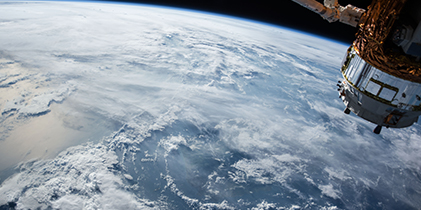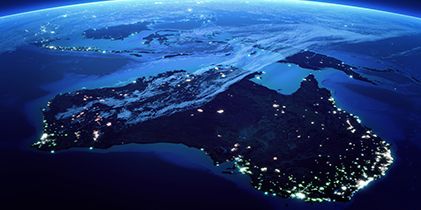
SPACE
The space industry in Australia currently generates total revenues of $AU3 to $AU4 billion and employs approximately 10,000 people.
Australia’s space industry
It comprises around 388 companies (more than 75 start-ups), 56 education and research institutions, and directly involves around 24 government agencies [ACIL17]. In September 2017, the Australian Government approved the establishment of a national space agency. It is widely believed this will support the sustainable growth of Australia’s space industry by advancing technology innovations and furthering scientific discovery.
In 2016, the global space economy was valued at $AU335 billion. Capturing a share of this market is desirable as it is a reliable growth industry that has proven resilient in the face of economic downturns [GSS17]. Approximately 80% of National Aeronautics and Space Administration’s (NASA) annual budget is spent in industry and at universities. A study of socio-economic impacts indicated that regional activity by NASA generates $AU2.60 of economic output for every dollar spent. The value of augmented global navigation satellite systems (GNSS) in Australia will add up to $AU13.7 billion to the Australian economy by 2020 [ACIL13], while the value to Australia of earth observations from space (EOFS) is expected to be worth another $AU1.3 billion by 2025 [ACIL15].
The space industry has been embedded in the Australian economy since the introduction of domestic satellite telecommunication and broadcasting services in the 1980s, and more recently, the advent of the internet. Space-enabled services provide benefits and boost productivity of other sectors, which in turn can have capabilities that overlap with the space industry [GSS17]. Examples discussed in this roadmap include: services (mainly financial, construction, and transport) (see Chapter 7), resources (see Chapter 4), manufacturing (see Chapter 5), and agriculture (see this Chapter). Many of these industries require highly skilled technical expertise such as data analytics or engineering, and are at the forefront of applying spatial data received from satellite and space-based infrastructure. These industries are likely to continue to benefit from and add to space industry capability in Australia [ACIL17].
Australia’s location in the southern hemisphere, and in line with the longitude of Asia, creates advantages for participation in the international space industry supply chain [ACIL17]. Australia has well-positioned ground stations across a 4,000 kilometre baseline that can observe many satellites, space debris, and weather conditions. Australia’s clear skies, low noise, and low light interference make it a suitable location for ground station calibration and validation. Australia is also well-positioned for satellite communications and control operations including access to many satellites for EOFS and GNSS.




